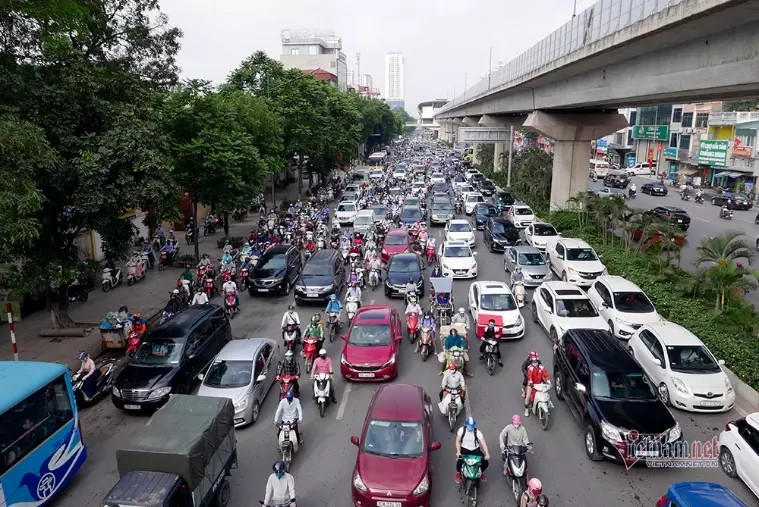
The Government has issued Resolution 48 dated April 5 on ensuring traffic order and safety and fighting against traffic congestion in 2022-2025.
Under the resolution, people’s committees in Hanoi, Hai Phong, Da Nang, Can Tho and HCM City must instruct professional agencies to give advice to the municipal people’s council to issue resolutions on prioritizing the development of mass public passenger transport systems.
It is expected that public passenger transport will undertake 30-35 percent of travel demand. Smart transport technology will be applied to urban traffic organization and management to reduce traffic congestion and environmental pollution.
The cities should consider zoning plans on motorbike bans or restrictions that fit their infrastructure and public passenger transport systems. This is part of the roadmap on restricting or banning motorbikes in some districts after 2030.
The cities also need to develop plans to collect fees from vehicles entering some areas of the cities at risk of traffic jams and pollution.
They have also been asked to use resources to immediately settle traffic congestion in some places, avoid the appearance of congestion points, and not let congestion last for more than 30 minutes.
Apartment blocks, multi-storey buildings and shopping mall projects will only be approved if they are in line with land-use plans, and satisfy requirements on parking lots, transport infrastructure and transport connections with major routes in urban areas.
The resolution alderman says cities need to apply measures to mitigate traffic accidents, and strive for 5-10 percent reduction in the number of deaths in road traffic accidents every year and at least 50 percent by 2030 compared with 2020.
They should apply advanced technology to ensure traffic order and safety and combat traffic jams, with the aim of a safe, convenient and environmentally-friendly traffic system.
The Government has asked ministries, branches and localities to continue to strictly implement laws and regulations, and speed up plans on ensuring traffic order and safety and combating traffic jams.
It also wants to restructure transport by increasing the market share of railway, inland waterway, maritime and aviation transport, gradually easing dependence on road transport; and by speeding up investment and development of urban and inter-provincial public transport systems, while restricting the use of private transport in large cities.
Vu Diep